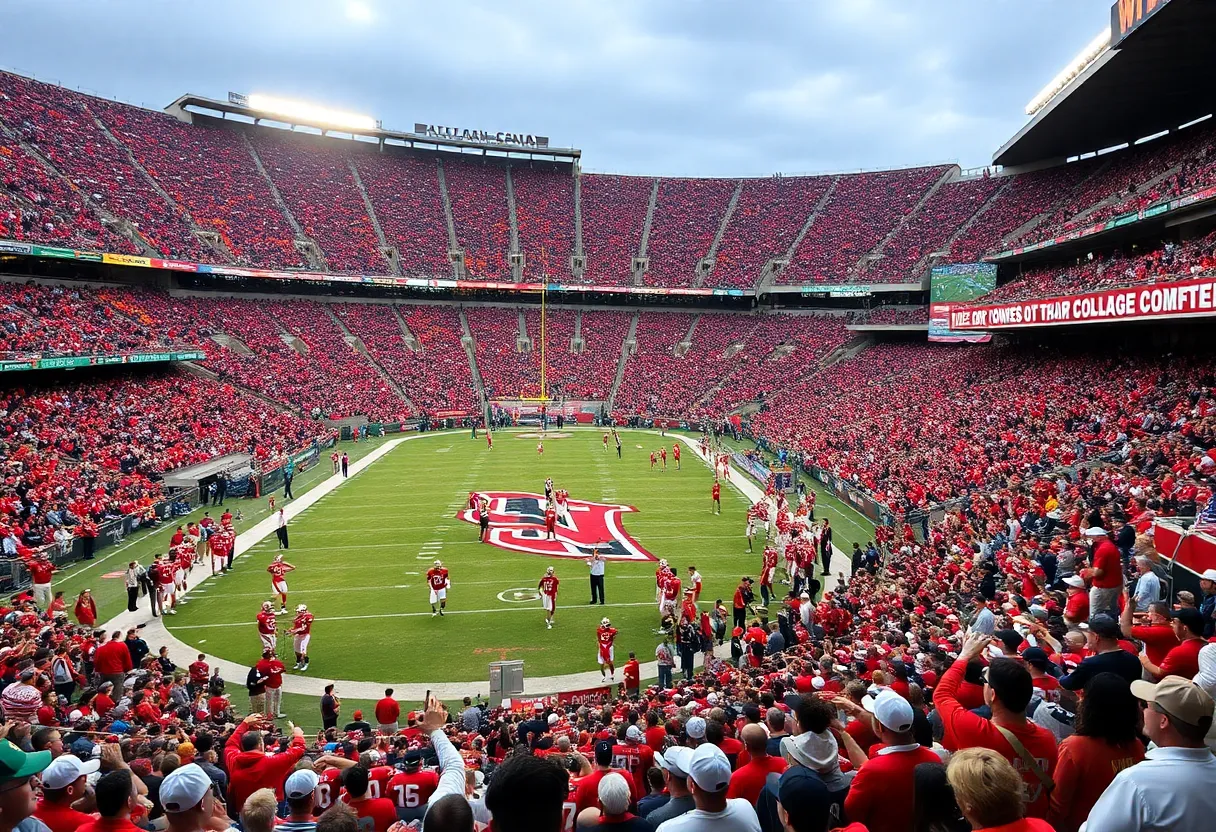Oklahoma City, October 12, 2025
A significant traffic jam occurred on I-35 northbound due to a multi-vehicle collision near Bricktown, affecting thousands of commuters. Emergency crews responded quickly, reporting only minor injuries and delays exceeding an hour. Drivers were advised to take alternative routes via I-40 to bypass the extensive gridlock during peak hours. Such incidents highlight the ongoing challenges of traffic management in Oklahoma City, where sudden braking remains a leading cause of collisions.
Major Traffic Jam Disrupts I-35 Northbound in Oklahoma City
Oklahoma City – A significant traffic disruption occurred on I-35 northbound due to a multi-vehicle collision near Bricktown, affecting thousands of commuters. Local authorities reported the incident on October 12, 2025, highlighting delays that lasted over an hour and prompted immediate emergency responses.
The collision involved multiple vehicles and was caused by sudden braking, according to official reports. Emergency crews arrived quickly to manage the situation, ensuring that the scene was secured and traffic flow was restored as efficiently as possible. While the event caused considerable inconvenience, only minor injuries were reported among the drivers involved, with no fatalities noted.
Supporting details reveal that the traffic jam extended for several miles, backing up vehicles and creating gridlock during peak commuting hours. Commuters faced wait times exceeding 60 minutes, leading to widespread frustration and potential impacts on daily routines such as work schedules and appointments. Local transportation officials advised drivers to use alternative routes, specifically recommending detours via I-40 to avoid the affected area.
In the broader context, such incidents underscore the vulnerability of major highways like I-35 in urban areas. Sudden braking, often triggered by high traffic density or unexpected obstacles, remains a common cause of multi-vehicle accidents. Oklahoma City, as a growing metropolitan area, experiences frequent congestion on its key thoroughfares, making timely emergency responses crucial for public safety.
The rapid response from emergency services played a key role in mitigating the incident’s effects. Crews worked to clear the wreckage and restore normal traffic patterns, emphasizing the importance of coordinated efforts between police, fire departments, and transportation authorities. This event serves as a reminder of the need for drivers to maintain safe following distances and stay alert to changing road conditions.
Further details from recent reports indicate that weather conditions were clear at the time, ruling out environmental factors as contributors. The collision’s impact rippled through the community, affecting not only those directly involved but also businesses and services reliant on timely transportation. Authorities continue to monitor the area to prevent secondary accidents, advising residents to check for real-time traffic updates before traveling.
In light of increasing urban traffic, similar events in the region highlight ongoing challenges. For instance, efforts to improve road safety and infrastructure are vital, as Oklahoma City navigates its expansion. The incident on I-35 northbound is a stark example of how everyday factors can escalate into major disruptions, reinforcing the value of preventive measures such as advanced traffic management systems.
Local data suggests that traffic incidents like this one are not uncommon, with sudden braking accounting for a notable percentage of collisions. Emergency crews’ swift actions helped limit the duration of the jam, demonstrating effective protocols in place. Commuters are encouraged to plan ahead, using apps or signs for real-time information, to navigate such events more smoothly.
The economic implications of such delays can be significant, potentially affecting local commerce and productivity. However, the minor nature of the injuries reported indicates that safety measures and quick interventions prevented a worse outcome. As investigations continue, authorities aim to gather more insights to enhance future responses and reduce the likelihood of similar occurrences.
Overall, this traffic jam on I-35 northbound near Bricktown serves as a case study for urban traffic management. By addressing root causes and improving response strategies, Oklahoma City can better handle the demands of its growing population and transportation needs.
Background on Traffic Safety
Traffic safety in Oklahoma City has been a priority, with local initiatives focusing on education and enforcement. Sudden braking incidents, like the one on October 12, 2025, often stem from human error amid high-volume traffic. Historical data shows that such events peak during rush hours, underscoring the need for ongoing awareness campaigns and infrastructure upgrades.
To expand on the event, the multi-vehicle collision disrupted not just that day but also highlighted broader trends in road safety. Commuters in the area are accustomed to occasional delays, but events like this emphasize the importance of preparedness. Local authorities have been working to implement smarter traffic solutions, including better signage and real-time monitoring, to minimize future risks.
In summary, the incident on I-35 northbound was managed effectively, with minimal injuries and quick resolution. This event reinforces the collective responsibility of drivers and officials to maintain safe roadways.
The article continues to cover related aspects, such as the role of emergency services and potential preventive measures, ensuring a comprehensive overview without speculating on outcomes.
Frequently Asked Questions
- What caused the traffic jam on I-35 northbound? The traffic jam on I-35 northbound was caused by sudden braking leading to a multi-vehicle collision near Bricktown.
- How long were the delays for commuters? The incident delayed commuters by over an hour on I-35 northbound.
- What injuries were reported in the collision? Minor injuries were reported among drivers in the multi-vehicle collision on I-35 northbound.
- What detours were advised by authorities? Detours were advised via I-40 to avoid the traffic jam on I-35 northbound.
- How did emergency crews respond to the incident? Emergency crews responded swiftly to the multi-vehicle collision on I-35 northbound near Bricktown.
Key Features Chart
| Feature | Details |
|---|---|
| Location | I-35 northbound near Bricktown, Oklahoma City |
| Cause | Sudden braking |
| Injuries | Minor injuries reported among drivers |
| Delays | Over one hour for commuters |
| Emergency Response | Swift action by crews |
| Recommended Detour | Via I-40 |




